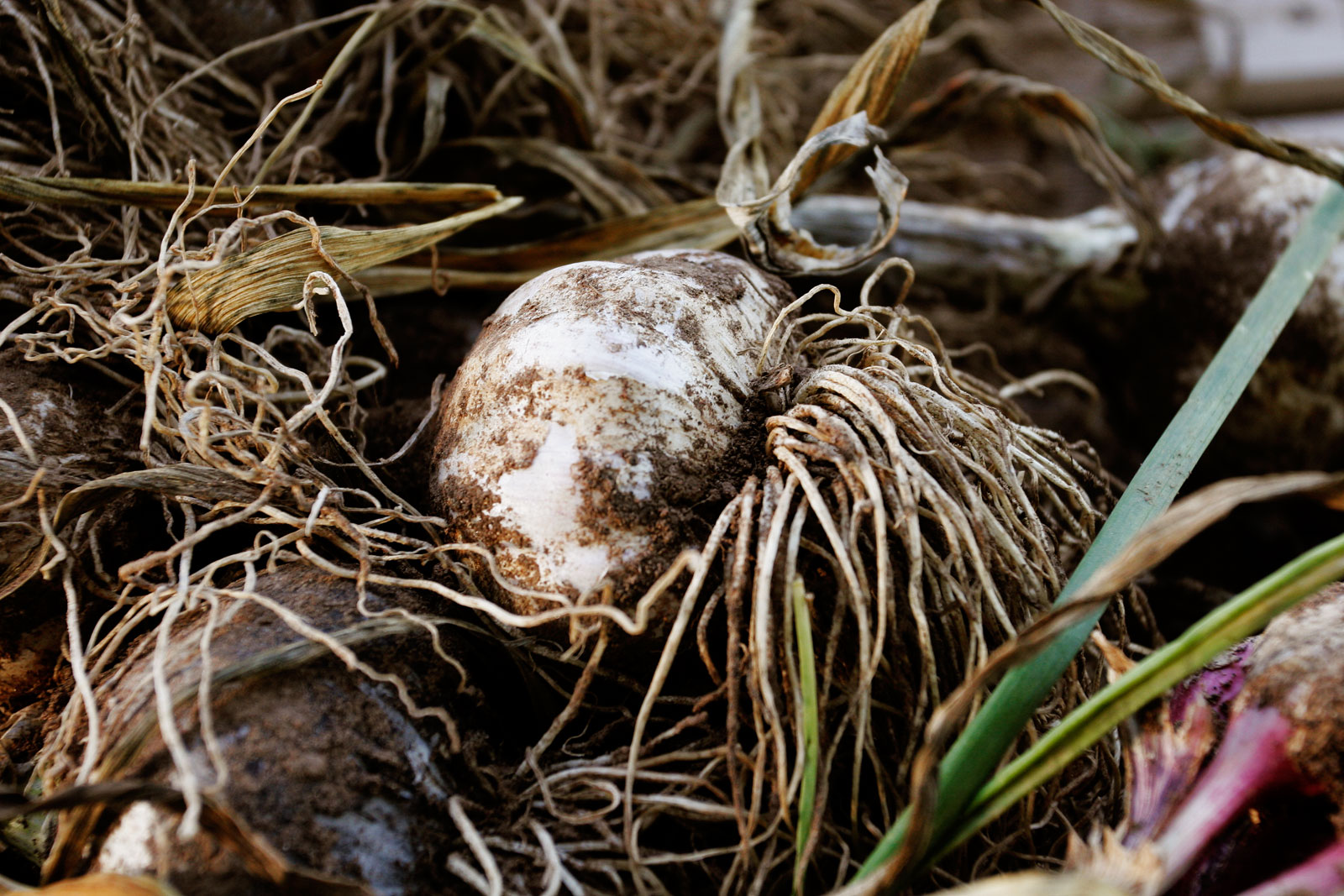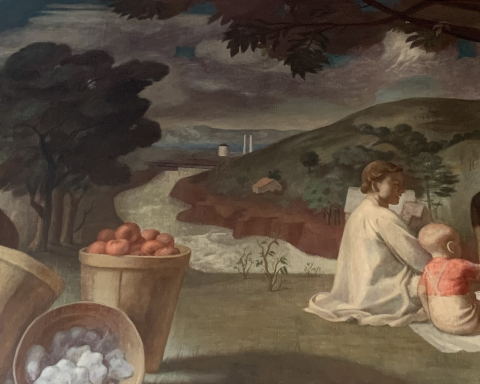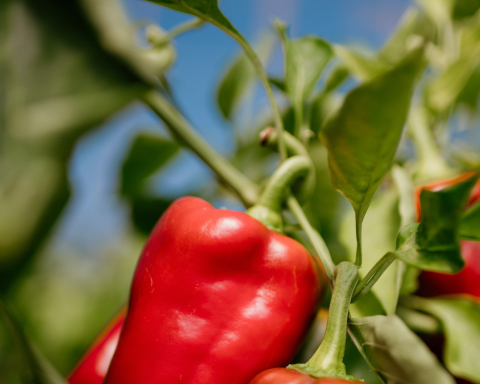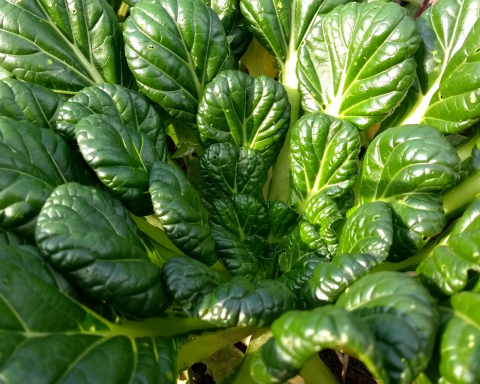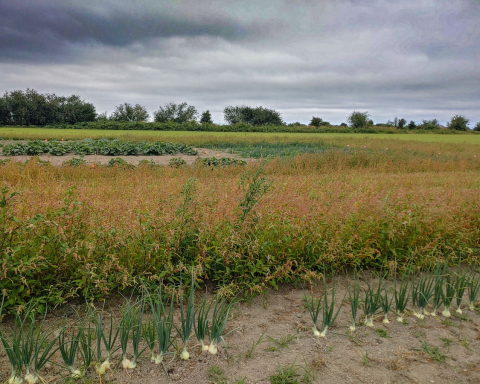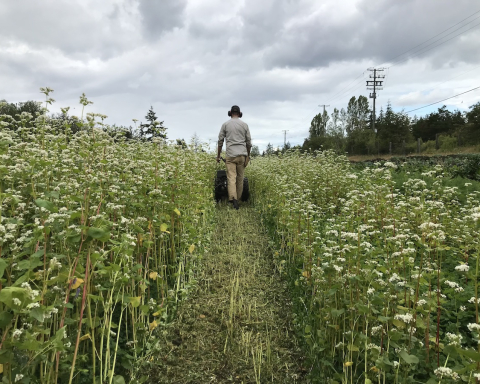By Anna Helmer
Misty rain on wet snow. This is the image I conjured for myself last summer every time it went to 40 degrees, which was many times. As a cooling vision, it is recommended. Mind you, now that I seem to encounter it every day, I find it a less enchanting experience. I am not actually complaining, though. Nothing like blue sunny skies to ruin a good day off inside.
Biodynamically, the higher latitude northern hemisphere winter is an important time for our soil as it is sealed off from the activity of the growing season. The plants are dead and decaying and no longer syphoning energy from the soil and the sun’s rays take a less direct path to earth. Cultivation plans are theoretical to the max. It’s a relaxing time for us as we really aren’t needed.
The winter soil is far from inert, however. Different types of energy (I am still in the process of sorting this out) are accumulating, perhaps balancing (the preparations 500 and 501 help with this), and certainly strengthening. We see ample evidence of this important activity, even if I’m unable to explain it completely.
Think of plants like garlic, nettles, and fall rye. The development of their robust, healthy roots takes place all winter: strong indication of life in the soil. In spring, the overwintered rye plant, supported by its roots, will enjoy some immediate riotous growth as soon as the snow melts. Anyone who has fought to knock down fall rye before crop planting can attest to its early-season vigour. And just look at that garlic greenery shooting up like a strong pillar, almost like a crystal.
Nettles, sometimes up even before the garlic, are imbued with fresh and strong wintery energy and here’s a bonus: we can get at it! The young plants are edible, and they make a powerful tonic for young seedlings. Gathering nettles for both eating and making compost tea has been on the spring to-do list for yonks—and by that, I mean for as long as there have been growers. Rudolph Steiner bemoaned the near-universal loss of folk wisdom in agriculture, but this gem seems to have survived, likely because it was so demonstratively helpful.
It is common practice on all sorts of operations to make a pass with the rotavator just before the snow falls—just enough to kill the forage and expose it slightly to soil. The result we see in the spring is a field almost ready for potato planting, so much of the cover crop has been incorporated. If that fall cultivation isn’t done, we must expect to have a very busy spring on the tractor making several passes with rotavator, spader, disc and harrow to prepare a seed bed that will likely be of lesser quality. The winter soil is more powerful than all that equipment.
So, while all those forces are wanging around down there, and we are welcoming excuses to stay inside, our farm application for proper Biodynamic certification is being initiated. We have been in and out of certification over the years. I hate to say it, but we are biodynamically-certified fickle. Very touchy. Historically, if we get our knickers in a knot, we are out. O.U.T. Out.
The last time we threw in the towel on certification was several years ago, when tractor use came up as an issue. The main theme of Biodynamics is that the farm is striving to become a complete entity, capable of providing for all its needs from within the property. Tractors, and their accoutrements, are obviously off-farm inputs, and there are schools of Biodynamic thought and practice that reject their use. We are not one of them. I don’t want to farm without at least two.
By way of comparison, organic certification is a more straightforward defense of our farming practices. Get the field numbers and acreages sorted out and keep a printed copy of the CGSB standards and permitted substances at the ready, alongside a binder containing the complaint log and compost records. Do a reasonable job of talking about cover cropping, be diligent in seed sourcing, keep the invoices organized, and that’s it. Mostly.
Biodynamic certification is a different story. I feel like I am back at university walking into an exam for a class I skipped too much. I can tell I am going to have to stammer my way through some very uncomfortable question and answer sessions. I feel challenged, intellectually.
The main opposition to our successful application will likely be our lack of livestock. Biodynamics come out strong on livestock, particularly cattle, as domesticated ruminants are exquisitely unique in their ability to consume the plants that have been enlivened by Biodynamic practice. They deliver the subsequently energized manure necessary to not only grow more plants but improve their quality and quantity. It is in this way that Biodynamic farms eschew the use of any sort of purchased soil amendment or plant fertilizer. The yields are robust and increasing because the non-physical forces emanating from the universe are contained in the soil, then focused on the growth of the crops. Cattle cause the cycle to perpetuate.
Which is fine if you want to keep cattle. We do not. Instead, we are using extensive cover cropping and turning the cull potatoes into useful compost for the non-potato crops. It is this conversation that makes me tremble the most. Am I going to be able to convince a Biodynamic inspector that potatoes too, are vessels for the energy of the universe which can be returned to and multiplied in the soil?
I foresee a long period of transition.
Anna Helmer farms with her family and friends in the Pemberton Valley. helmersorganic.com
Featured image: Garlic roots develop in cold winter soil. Credit: Fir0002/Flagstaffotos.


